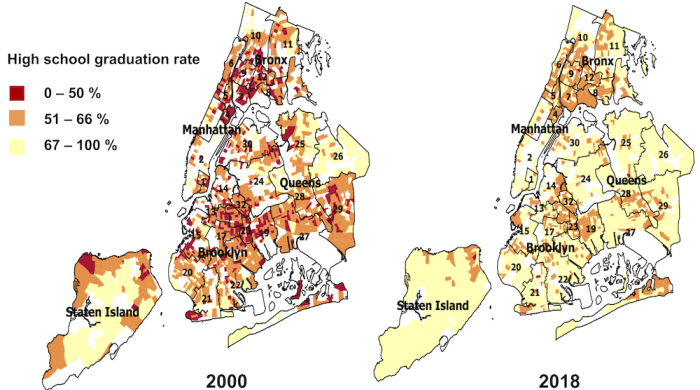This post is an introduction to a series of Spotlights exploring how key student outcomes have changed during the last two decades.
The Research Alliance was founded in 2008 to provide rigorous, nonpartisan evidence about the problems facing New York City’s public schools—and about the impact of policies and practices designed to address those problems. Since that time, we have conducted studies on a wide range of topics, carried out fieldwork in hundreds of NYC schools, surveyed tens of thousands of students and teachers, and released more than 45 reports, briefs and guides. As we mark the Research Alliance's 10th Anniversary, we are taking stock of progress and challenges in NYC's education system.
The analyses presented in this series highlight both notable system-wide improvements and the persistence of deep inequality in New York City’s public schools. There is considerable evidence that the City’s schools have improved over the last two decades. Across almost every major outcome that the Research Alliance analysis has tracked, including attendance, achievement, high school graduation, and college enrollment, we see progress over time. Students also have become more likely to stay enrolled in their schools—and in the system—compared with prior cohorts, suggesting more satisfaction with NYC’s public education options.
Yet, in spite of this progress—and the fact that, for most outcomes, we see improvement for all student subgroups—there are still large disparities associated with students’ background characteristics, especially their race/ethnicity, neighborhood, and family income. Black and Latino students and students from poor families are much less likely than their peers to graduate from high school and enroll in college. These gaps can be traced back to early disparities in students’ opportunities and outcomes, including differences in the characteristics of schools they attend, as well as large differences in special education referrals, suspensions, absenteeism, and test scores.
The current Spotlight series largely focuses on disparities associated with students’ race/ethnicity and neighborhood poverty. In future work, we hope to examine a wider range of outcomes and additional dimensions of inequality (e.g., gender, special education and English learner status, etc.).
Big Questions Guiding the Series:
- How have standardized test scores for elementary and middle school students changed over time?
- How have rates of attendance and chronic absenteeism changed over time?
- What trends emerge in students' pathways through high school and into postsecondary education?
- Do these patterns vary by students’ race/ethnicity or neighborhood poverty? Have gaps between student subgroups decreased, increased, or stayed the same?
- What relationship exists between students' outcomes and the area of the City in which they live?
This post was authored by James Kemple, Chelsea Farley and Kayla Stewart.
This series was published in Spring 2019.
Read the Research
The Research Alliance is committed to conducting research that is responsive to input from NYC’s diverse education stakeholders. We would be interested in hearing from you about priorities for future analysis. What else should we be looking at, to assess progress and equity in NYC schools? Let us know via email.
How to Cite this Spotlight:
Farley C. 2019. "How Have Key Student Outcomes Changed in NYC Schools?" Spotlight on NYC Schools. Research Alliance for New York City Schools.





